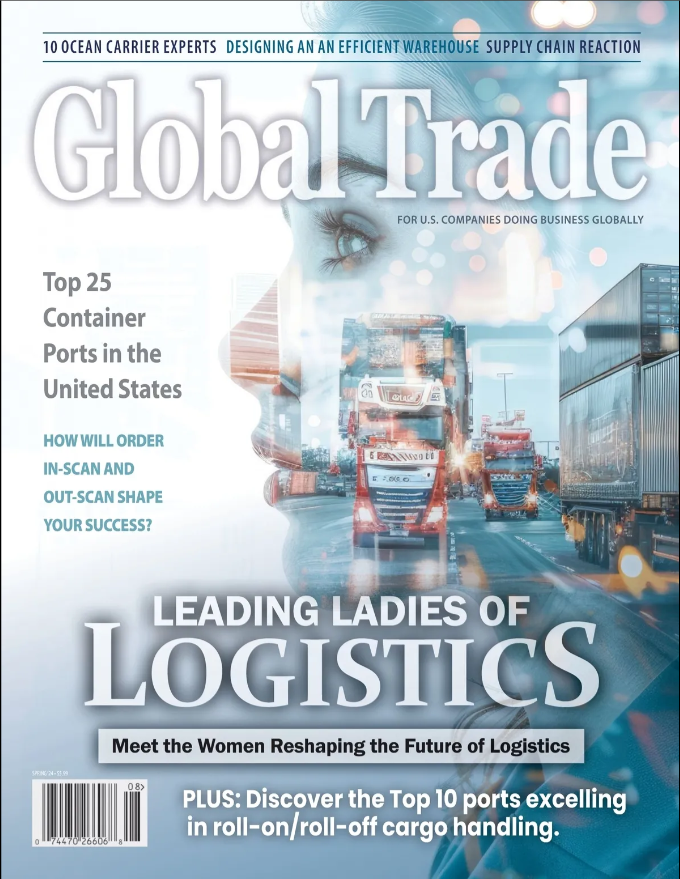Slimming the Waste
CEOs Talk About How Supply-Chain Efficiencies Have Increased Their Global Sales
Diane Zimnavoda, CEO of RCF Technologies, says strong relationships built over many years with suppliers is the company’s key supply-chain efficiency. An aerospace industry supplier that counts Boeing, Gulfstream and Honeywell among its end users, RCF produces a proprietary elastomeric composite and has developed a material called Rishon used in seals, tapes and ducting.
The company has taken off since moving from California to Vidalia, Georgia, in 1994 in search of improved cost structures, and despite some slowdowns a few years ago, it is poised for steady growth powered by export sales.
“Exporting is very important and is becoming even more important,” says Zimnavoda. “The aerospace industry is global, obviously. We ship to Taiwan, the Czech Republic, Brazil, Canada, all over.
“We have to stay competitive,” Zimnavoda says. “We have to keep our costs here reasonable and make sure our efficiencies are in place. Good relationships with our suppliers make a big difference in how competitive we can be overseas. It’s a learning process. They have to know that you will support them and not source from 20 other places. When they know you and trust you, they are more willing to work with you.”
Zimnavoda believes her company has a bright future and that exporting will play an increasingly important role.
Liberty Pumps CEO Charlie Cook says the company’s lean manufacturing philosophy has been the core of its efficiency. The New York-based manufacturer of pumps, mostly for wastewater, initially embraced lean manufacturing when it was known as just-in-time manufacturing in the late 1980s.
“At the time, just-in-time was more of an inventory control tool than anything else,” says Cook. “By reducing inventory to what you actually needed, we improved efficiency and the quality of components acquired from vendors. If something was coming in just-in-time, it had to be right. That evolved into lean manufacturing, which also included a more comprehensive waste-reduction program.”
Cook says controlling inventory allowed the company to operate in a smaller footprint for each manufacturing cell. That allowed more production in a smaller space with fewer people.
Liberty Pumps’ primary clients are plumbing equipment distributors or wholesalers who sell to contractors. The company has customers throughout the world, with exports accounting for about 16 percent of gross sales. So far, Liberty has concentrated sales to countries that use 60-hertz power systems. That has limited exports, but the company is working on a 50-hertz version of its pumps and hopes to have it available by mid-2013.
“Exports have gradually grown to be a significant part of our business,” says Cook. “One of the limiting factors has been countries that use 50-hertz power. In order to address those markets, we are in the process of developing a parallel line.”
He plans to target markets in Central and Eastern Europe with the new product line.
“When you think about exports, many people think about the main countries of Western Europe because they have the most developed economies. There is an assumption demand will be greatest there. In reality, there is greater potential in the lesser developed countries, the old Soviet satellites.”
The company sources some of its components from China and Taiwan at a lower cost than domestically produced parts, allowing it to contain costs.
“Due to competition, we had to look offshore to source some of our components. For example, we could buy a completely machined casting offshore for less than the cost of an un-machined casting produced domestically,” Cook says. “Fortunately, the differential has been reduced over the years and we have gotten more competitive in this country. We are now focusing on domestic sources whenever that is practical.”
Liberty Pumps will likely continue to source its motors from manufacturers in China and Taiwan. Over the years, the volume of products sourced from Asia has increased, allowing the shipping of multiple components within one container.
“We have been able to control our inventory and our transportation costs at the same time,” Cook says.
“Not many things that are organic to the U.S. can be successfully exported,” says Michael Cox, president and CEO of Cox Industries, a 60-year-old wood pressure treating company headquartered in Orangeburg, South Carolina. “With dimension lumber, we are certainly net exporters. Nobody around the world grows wood quite like we do. We are the Saudi Arabia of Southern Yellow Pine trees. It’s an interesting commodity due to its strengths and characteristics that can’t be replicated anywhere else. It makes products resilient, flexible and strong. That’s the reason it’s a good product to export.”
Global demand for treated outdoor wood products is growing fast. That demand is propelling increased sales for Cox Industries, which has two major business segments: aesthetic wood for end uses such as decking, outdoor flooring or fences and an industrial business which focuses on electrical poles and pilings.
Exports account for about 10 percent of the company’s $200 million annual revenue, but just a few years ago, international sales were only one percent. Primary residential markets include China, Taiwan and Japan, followed by Europe and the Middle East. Caribbean nations and Central America are among the company’s industrial markets. Sales have grown both organically and through acquisitions.
Cox Industries employs 400 and operates 15 manufacturing facilities stretching from New Jersey to Alabama. Most of these plants are close to the company’s primary raw material source, the Southern Yellow Pine belt.
Cox says the most important efficiency in his company’s exporting is the proximity of its manufacturing sites to major ports on the Eastern Seaboard, including ports in Charleston, South Carolina; Wilmington, North Carolina; and Savannah, Georgia. He also cites locations near critical interstate highways in South Carolina and North Carolina.





Leave a Reply